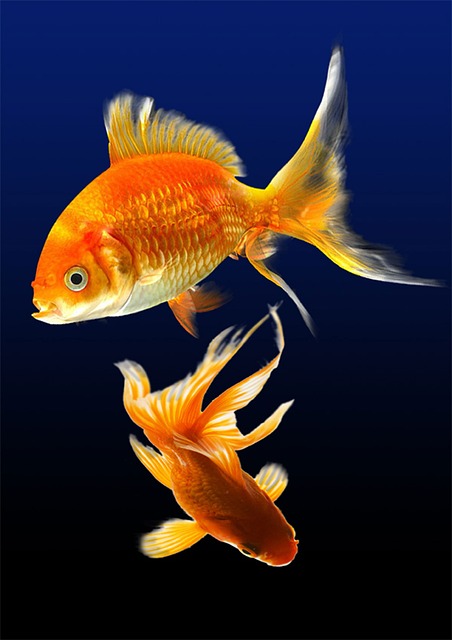Creating multi-species ocean habitats in aquariums balances ecosystem mimicry with visual appeal, serving as both aquarium attractions and educational tools. Continuous monitoring ensures ecological accuracy, while diverse species displays captivate visitors with natural behaviors, enhancing understanding of marine interconnectedness and promoting ocean conservation.
Discover the power of multi-species habitats in creating realistic ocean environments. This article explores key strategies for balancing ecosystems, incorporating diverse species, simulating natural interactions, and adopting sustainable practices. By fostering complex relationships between various marine life, these approaches not only enhance aquarium attractions but also contribute to the overall health and dynamism of aquatic ecosystems. Dive into this comprehensive guide to unlock the secrets of multi-species aquariums.
Balancing Ecosystems: Key to Realistic Marine Environments
Creating multi-species habitats for a realistic ocean environment requires careful balancing of ecosystems, turning aquariums into vibrant showcases of marine life. This delicate equilibrium ensures that each species thrives in its natural conditions, mimicking the intricate web of interactions found in the open sea. By accommodating diverse needs—from water temperature and current to shelter and food sources—aquarists can foster thriving communities that accurately represent the ocean’s complexity.
Realistic marine environments not only provide aesthetic appeal as aquarium attractions but also serve as educational tools, allowing visitors to gain a deeper understanding of the interconnectedness within ecosystems. Balancing these systems demands ongoing monitoring and adjustment, reflecting the dynamic nature of the oceans. This commitment to ecological accuracy ensures that aquariums remain not just visually stunning, but also scientifically significant and inspiring for all who explore them.
Incorporating Diverse Species: Enhancing Aquarium Attractions
Aquariums can significantly enhance their visitor experience and appeal by incorporating multi-species habitats that mimic realistic ocean environments. This approach not only provides a more diverse and captivating display but also offers educational opportunities for visitors to learn about various marine species and their interactions. By including a wide range of organisms, from vibrant coral reefs to elusive sharks and schools of small fish, aquariums can create dynamic ecosystems that engage both the senses and curiosity.
Diverse species in aquariums contribute to what is often referred to as enhanced aquarium attractions. These attractions go beyond mere visual beauty by fostering a deeper connection between visitors and marine life. Well-designed multi-species habitats allow for natural behaviors to be observed, creating a more immersive experience. For instance, coral reefs attract a myriad of fish, invertebrates, and even sea turtles, offering a vibrant underwater spectacle. Additionally, incorporating predator-prey dynamics and symbiotic relationships adds complexity, making the aquarium not just a collection of individuals but a thriving ecosystem that captivates and educates visitors about the delicate balance of nature.
Simulating Natural Interactions: Creating Dynamic Ocean Scenes
In the pursuit of creating realistic ocean environments within aquariums, simulating natural interactions is paramount. By fostering dynamic scenes, aquarium attractions can replicate the intricate web of relationships that exist in the vast oceans. This involves careful consideration of species selection, habitat design, and ecological balance. For instance, integrating diverse species known to interact in nature—such as coral reefs teeming with fish, sea turtles, and smaller invertebrates—can produce a vibrant ecosystem.
Aquarium curators must also account for predator-prey dynamics, territorial behavior, and symbiotic relationships. Strategically placing obstacles, hiding spots, and feeding stations can encourage natural behaviors, enhancing the overall realism. Furthermore, regular monitoring and adjustments ensure that these interactions remain balanced, maintaining a healthy and dynamic ocean scene that captivates aquarium visitors.
Sustainable Practices: Nurturing Multi-species Aquariums
Creating multi-species habitats in aquariums offers a unique opportunity to replicate the complexity and beauty of ocean environments while promoting sustainable practices. By housing various marine species together, aquarium curators can cultivate vibrant ecosystems that mirror nature’s intricate balance. This approach not only provides visitors with captivating aquarium attractions but also serves as an educational tool to raise awareness about conservation efforts.
Sustainable aquarium design emphasizes minimizing environmental impact and maintaining optimal conditions for all inhabitants. Curators employ advanced filtration systems, controlled lighting, and precise temperature regulation to ensure a healthy living space for each species. Additionally, sourcing animals ethically from sustainable practices and participating in breeding programs that support wild populations contribute to the overall ecosystem’s well-being. These measures help protect ocean biodiversity while delivering unforgettable aquarium experiences.
Multi-species habitats are not only ecologically balanced but also significantly enhance aquarium attractions. By simulating realistic ocean environments, these setups foster a dynamic and sustainable ecosystem that captivates visitors while promoting environmental stewardship. Through careful consideration of species interactions and implementation of sustainable practices, aquariums can offer profound insights into marine life and inspire future conservation efforts.
